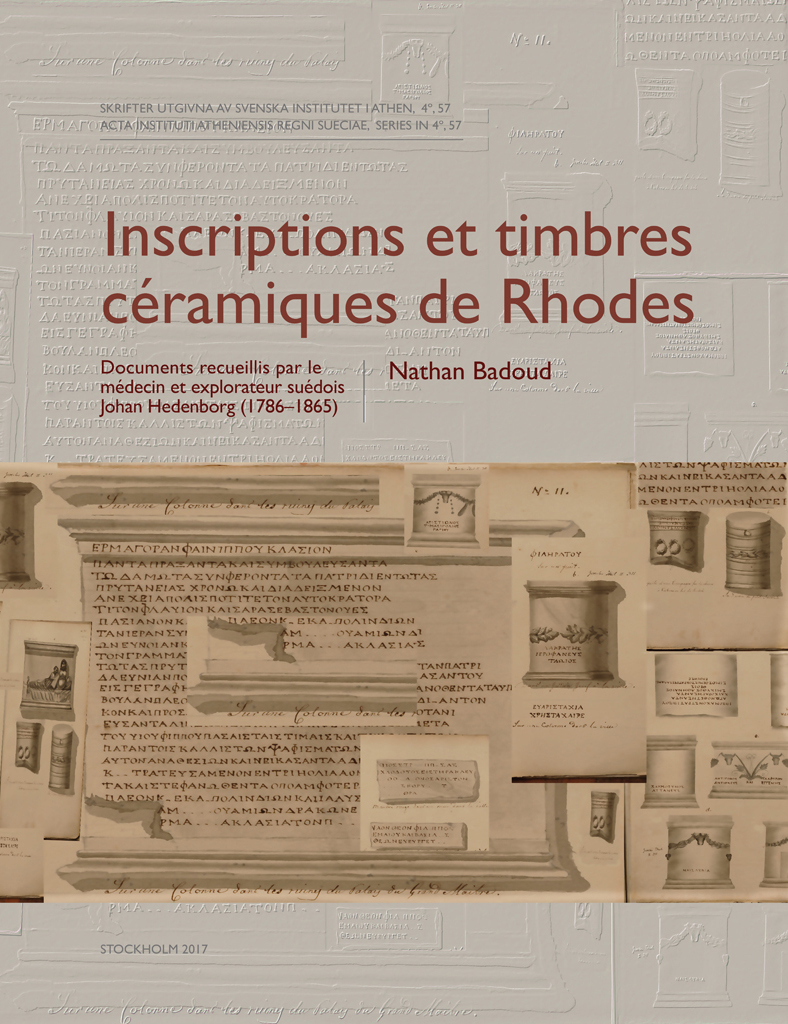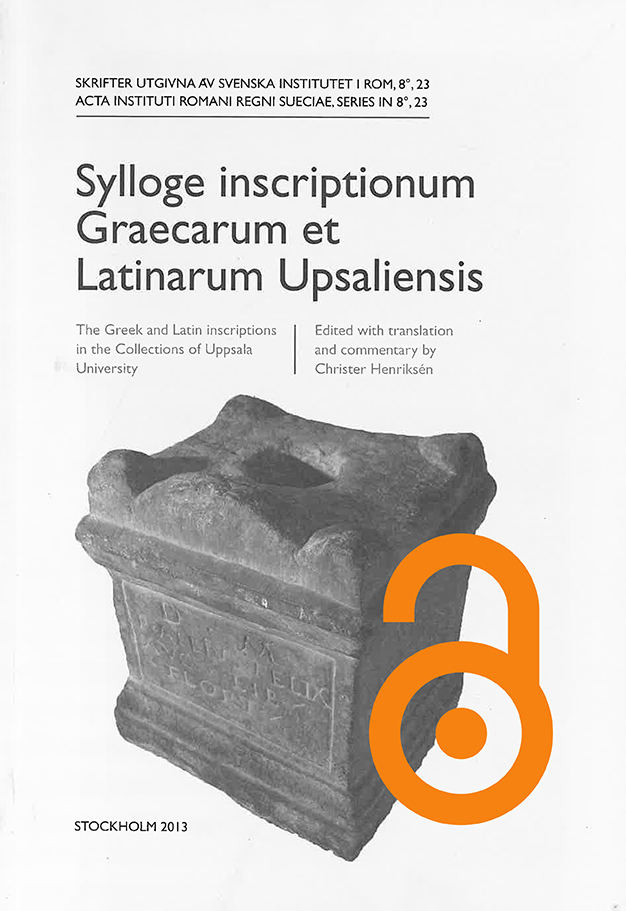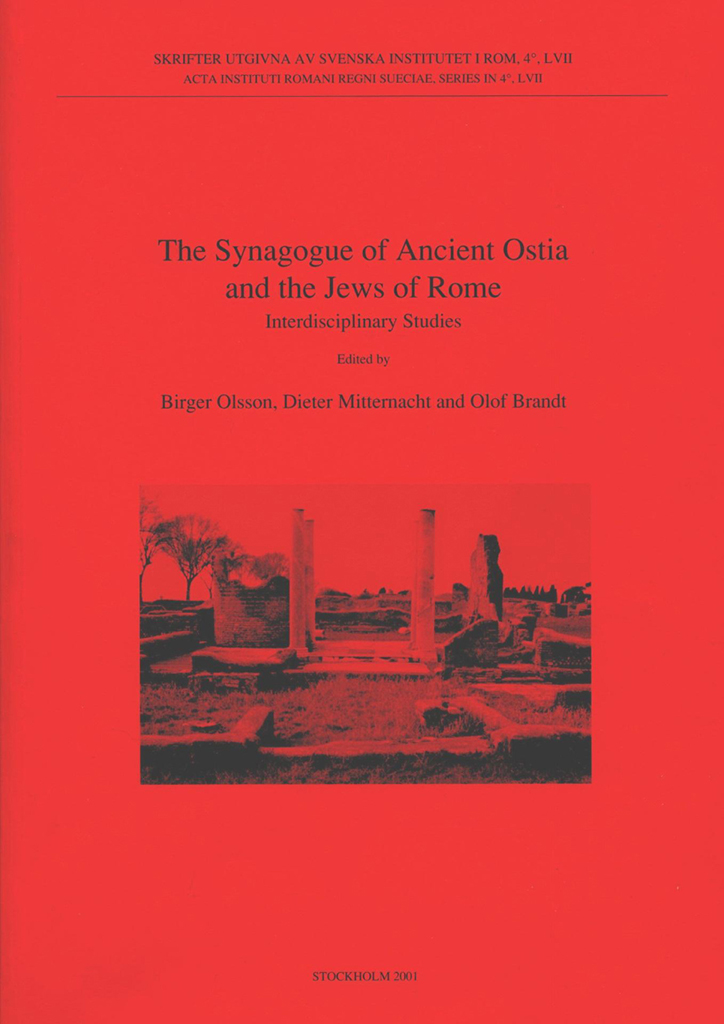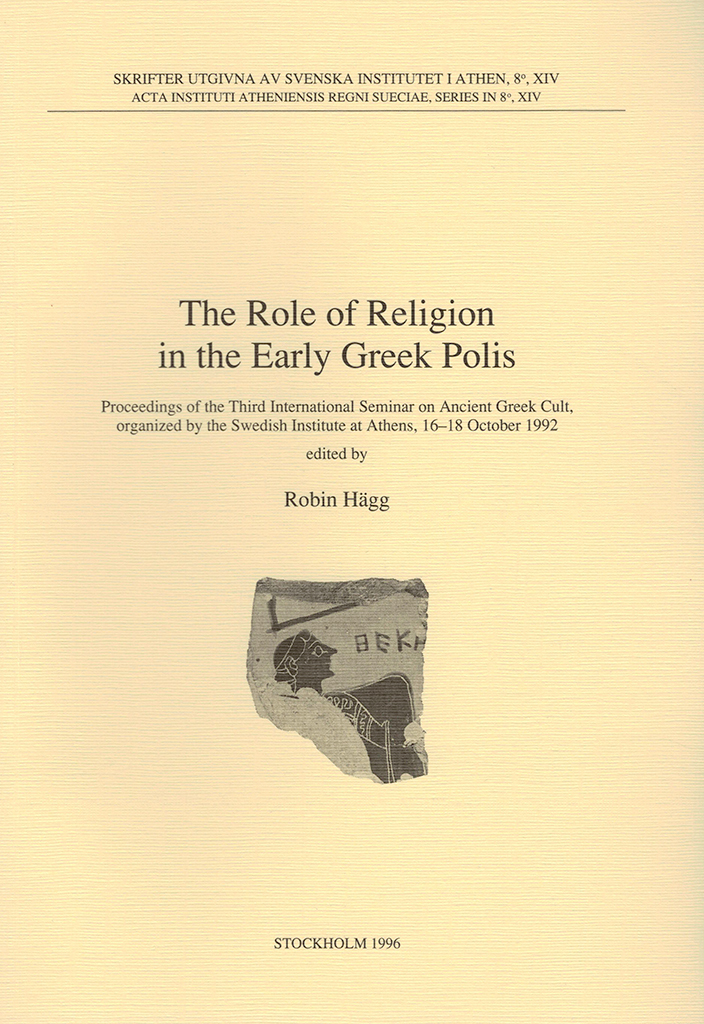Published by the Swedish Institute at Athens. Distributed by Eddy.se AB. Inscriptions et timbres céramiques de Rhodes. Documents recueillis par le médecin et explorateur suédois Johan Hedenborg (1786–1865) By Nathan Badoud Abstract Johan Hedenborg (1786–1865) was a medical doctor whose curiosity gave him a wide interest in natural and social science. In 1825, he was attached to the embassy of Sweden and Norway to the Sublime Porte. After exploring the Aegean and both sides of the Red Sea for fifteen years, he settled in Rhodes with the aim of writing a history of the island. The manuscript, completed in 1857, was never published. It contains copies of 303 inscriptions on stone, 54 of them otherwise unknown, and drawings of more than 150 stamped amphora handles and tiles. All these documents are studied here. Bibliographical information Nathan Badoud, Inscriptions et timbres céramiques de Rhodes. Documents recueillis par le médecin et explorateur suédois Johan Hedenborg (1786-1865) (Skrifter utgivna av Svenska institutet i Athen, 4°, 57), Stockholm 2017. ISSN 0586-0539. ISBN 9789179160654. Hard cover, 145 pages. Reviews Anzeiger für die Altertumswissenschaft 70, 2017, 6-8 (C. Barker) Bryn Mawr Classical Review 2018.08.02 (Lucia Criscuolo) The Classical Review 69:2, 2019, 664–666 (Nicholas K. Rauh) Dialogues…
Published by the Swedish Institute of Classical Studies in Rome. Distributed by Eddy.se AB. Sylloge inscriptionum Graecarum et Latinarum Upsaliensis. The Greek and Latin inscriptions in the Collections of Uppsala University Edited by Christer Henriksén Abstract The present book is the first complete edition of the 24 Greek and Latin inscriptions in the Collection of Classical Antiquities and the Victoria Museum of Uppsala University. It contains an introduction that discusses the various types of inscriptions represented in the collections, their probable provenance and their history as part of the Uppsala collections. After the introduction follows the actual edition, which consists of a new reading of text of each inscription, followed (where possible) by an English translation, a summary of its physical and palaeographical features, and a line-by-line commentary. The commentary explains each text with regard to its contents and discusses points of linguistic, phraseologic, and onomastic interest. Inscriptions of particular interest are provided with separate introductions that place them in a wider historical and social context. While the commentary is intended to be useful both to specialists in epigraphy as well as to the general classicist, it also aims at providing such information that may interest the general public. The…
Published by the Swedish Institute of Classical Studies in Rome. Distributed by Astrom Editions. The Synagogue of Ancient Ostia and the Jews of Rome. Interdisciplinary studies Edited by Birger Olsson, Dieter Mitternacht & Olof Brandt Abstract In March of 1997 a research project on the ancient synagogue began at Lund University, Sweden, continuing a tradition of research that has its roots in the 1930s. The project’s title “The Ancient Synagogue: Birthplace of Two World Religions” suggests that Judaism and Christianity existed for a time in close proximity to each other and were shaped by the same particular milieu within the ancient world, namely, the synagogue. The synagogue in ancient Ostia was chosen as an initial case study, since there is evidence that it was built during the first century CE and consequently is one of the earlier synagogues in the Roman world to have been excavated. Olof Brandt presents for the first time a more extensive description of the area outside the city walls where the synagogue was built. Anders Runesson surveys all the material that has been published about Ostia in order to make a new reconstruction of the synagogue’s history in Ostia. Magnus Zetterholm attempts, primarily with the…
Published by the Swedish Institute at Athens. Distributed by Astrom Editions. The role of religion in the early Greek polis. Proceedings of the Third International Seminar on Ancient Greek Cult, organized by the Swedish Institute at Athens, 16–18 October 1992 Edited by Robin Hägg Abstract These twelve papers read at an international seminar in Athens deal with various aspects of the role of religion in the early Greek polis, based on the epigraphical, iconographical and archaeological evidence. Among the special topics discussed are territorial myths and the mythical articulations with regard to the early polis, the Greek temple-builders, the distribution of offerings and rituals between graves and sanctuaries, the development of sacred and profane civic ideology in Athens, processions (pompai), verbal and ritual obscenity in women’s cults, prohibitionary inscriptions, the role of the seer, the Thesmophorion in central Athens, the cults in Solonian Athens, cults by the seashore and Dionysos at Argos. Contents Preface (p. 7) Irad Malkin, ‘The polis between myths of land and territory’, pp. 9–19. Walter Burkert, ‘Greek temple builders: who, where and why?’, pp. 21–29. François de Polignac, ‘Entre les dieux et les morts. Statut individual et rites collectifs dans la cite archaïque’, pp. 31–40. Sanne…




